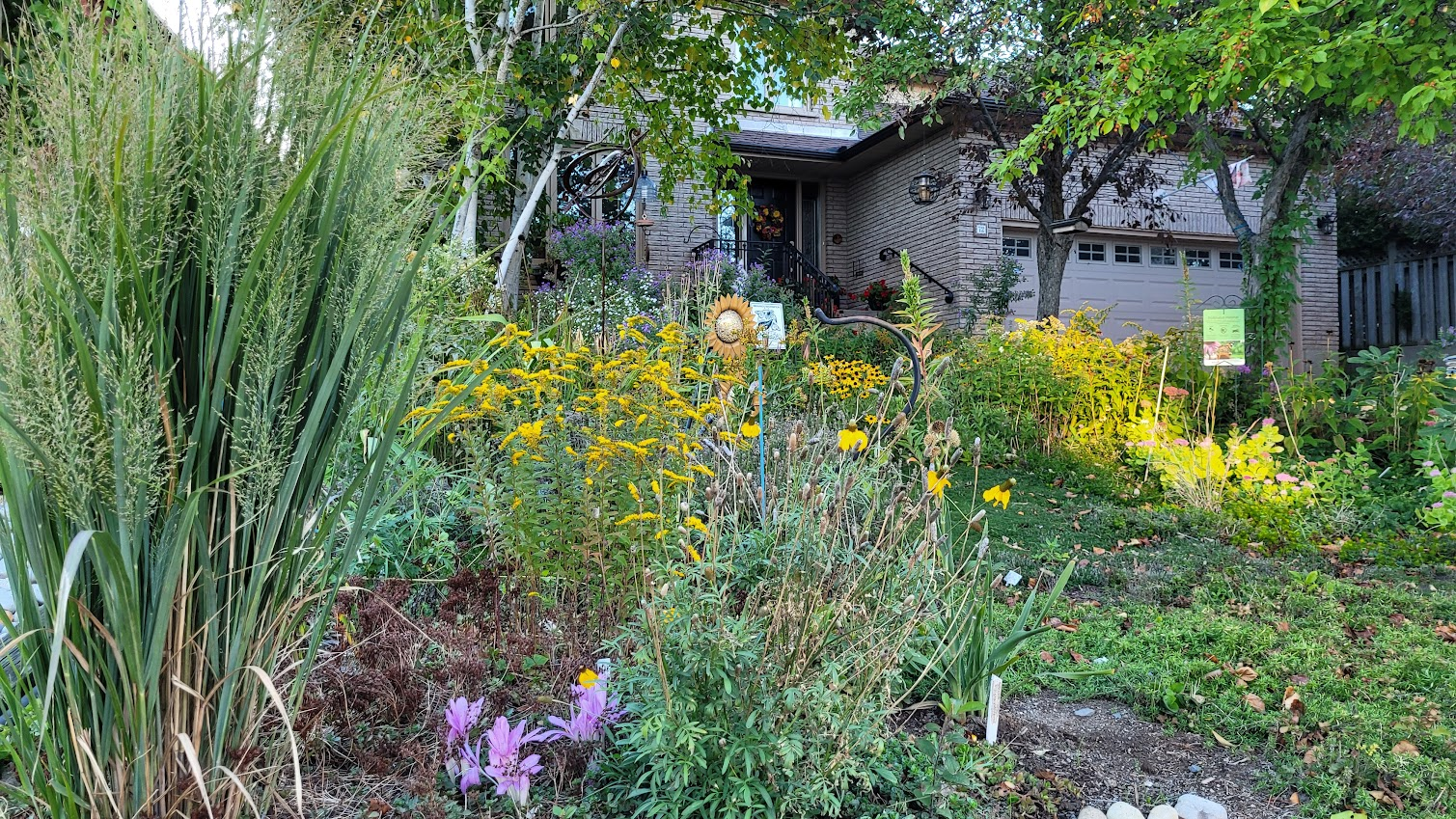By Olivia Duke
Change is upon us. Between the minister’s approval of Halton Regional Official Plan Amendment 49 (ROPA 49), Bill 23 — More Homes Built Faster Act, and the federal government’s immigration plan to grow the economy, there are a number of significant changes on the horizon. It is undeniable: the housing crisis is real, and our labour force is in need, and these plans, especially in combination, seek to remedy these issues. But at what cost?
Is it a government overstep? Maybe. Is it a municipal intervention? It’s possible. Will it be the solution for the current housing crisis, one that we so desperately need, or a solution to anticipate the continued, inevitable growth through immigration? It depends on who you ask. According to BNN Bloomberg, Ontario has yet to meet the national housing supply average in 2020 and it is clear that this continued trend has become problematic.
While it’s still early to fully understand the implications of the province’s involvement in municipal decisions or gain clarity on any projected timelines with many unknowns, this article, part one of two, will feature what we know so far: what has been communicated by both the province and the region, and their impacts on Burlington.
On November 4, 2022, the Minister of Municipal Affairs and Housing approved the Regional Official Plan Amendment 49 (ROPA 49) in Halton. According to the Halton Region website, a ROPA can be site-specific, which identifies an amendment to a specific part of land in the region, or it can be region-wide, applying to all land in the region and acting as a response to requirements imposed by the province.
According to the Halton Region Council Meeting held on November 9, 2022, ROPA 49 entails 45 modifications made by the minister, and of those modifications, the key impacts specific to Burlington include the following:
1. The expansion of the regional urban boundary.
What this means: adding new urban land to the existing urban boundary in the amount of 90 new area hectares for community use with no new additional employment land (out of a total proposed 3,350 net area hectares region-wide). For some regional areas, this includes the removal of prime agricultural land (approximately 10% of the total prime agricultural land available in Halton).
2. Delete the current council-adopted framework for growth planning that would have been to the year 2041, and implement a provincially-imposed plan that is now until the year 2051.
What this means: changing density and intensification targets, with a new distribution of growth, up to and including 2051. Originally, the region concluded that they would have enough land to accommodate growth to 2041, and there would be no need for urban boundary expansions. This was concluded using the Land Needs Assessment Methodology, which is used to determine whether a municipality has enough urban land to support population and employment growth targets, according to Halton Region. For growth following 2041, the region had identified plans to conduct an exercise within five years to determine how well the council-adopted framework of growth planning is meeting growth targets, and whether new land would be required beyond the urban boundaries to enable that growth. The growth targets for 2051 for the region have now been identified by the province instead.
3. The conversion of select employment land to community land.
What this means: enabling new residential and/or mixed-use opportunities for 11 parcels of land (100 hectares) that were previously zoned for employment only. Five parcels are in Aldershot on King Road, and six parcels are in Bronte Creek Meadows at Burloak and Upper Middle, stretching to Mainway.
4. Exemption of specific parcels of land from Area-Specific Plan requirements.
What this means: select pockets of land as specified by the minister will not need to wait for the completion of Area-Specific Plan requirements, such as secondary plans, before embarking on significant new development. According to the Province of Ontario’s website, secondary plans typically include detailed policies that pertain to public spaces, parks, and urban design. These parcels will be exempt from providing these additional policies in this form.
These extensive changes now mandated as final by the minister, without opportunities for appeal, shouldn’t come as a surprise.
Terms like “affordable housing” have been loosely thrown around, yet championed, at just about every recent municipal election, with grandiose aspirations to fulfill the needs of residents with all income levels in mind. Rather ambitious, especially without a concrete plan in place or without the evidence of cooperation with building developers, or with homeowners who have been saddled with permit delays on their home improvements. It can be argued that these promises have often ended up running empty, which may be indicative of municipal priorities, lack of collaborative efforts, or even lack of oversight.
What happens when these measures continue to be overlooked or delayed? The province steps in, and local autonomy is removed from the city and region’s decision-making abilities.
This is the dilemma Burlington has found itself in, much like other neighbouring municipalities. Arguably, the pandemic exacerbated the so-called great migration from metropolitan areas, but these final modifications as brought on by the province bring on significant, long-term changes to the fabric of our community, and we’ve lost the ability to have our say because of the inability to appeal these modifications. Simply put, it appears that certain municipalities have dragged their heels for far too long and the province has had enough.
Still, Burlington residents have said that when it comes to housing, as a municipality, Burlington has overpromised, and underdelivered. It has let down residents, creating barriers to an adequate supply of residential homes of varying configurations. It has let down businesses that employ our residents because of what appears to be the city’s aversion to gentle density and building. So much so that other provinces are enticing young professionals and those employed in trades with promises of employment opportunities and attainable housing. The Alberta government launched the “Alberta is Calling” campaign, leading with the message that it is the best and most affordable province to live in, specifically targeting those living in the Greater Toronto Area and surrounding cities.
Communities that were once deemed rural in the outskirts of prominent municipalities or that were considered lower-tier municipalities have grown significantly; there are examples in the suburban municipalities in the surrounding areas of Toronto and closer to home. Between 2016 and 2021, according to Statistics Canada, the town of East Gwillimbury topped the list with growth of over 44%, illustrating evidence of urban spread in the Toronto area. Halton Region’s own Milton came in fourth on the list, with growth of almost 21%. For some, this statistic may be shockingly lower than expected, given just how quickly Milton has visibly grown.
The province has now set a new target of 1.5 million new homes in the next 10 years. According to the Halton Regional Council meeting last week, what this means for Burlington, Oakville, and Milton specifically is that it imposes a target of 83,000 units for the region over these next 10 years, which accounts for 65% more than what was planned for. These additional units that account for that 65% are primarily planned for Burlington and Oakville. This unplanned, greater growth will mean extensive need for building and infrastructure support, without the clarity of suggesting how these plans will be phased in, or financial ramifications for taxpayers at this time.
With all of these changes apparently in an effort to improve the current housing supply, it raises the question: will these additional 83,000 units even be affordable and within reach for the average resident?
Part two will explore the environmental impacts, and what these changes will mean for our rural communities and the Greenbelt.
Sources:
BNN Bloomberg. High levels of immigration and not enough housing has created a supply crisis in Canada: Economist. Url: https://www.bnnbloomberg.ca/canada/video/high-levels-of-immigration-and-not-enough-housing-has-created-a-supply-crisis-in-canada-economist~2363605 (accessed Nov. 13, 2022).
Government of Alberta. Alberta is calling. Url: https://www.albertaiscalling.ca/. (accessed November 14, 2022).
Government of Canada. An immigration plan to grow the economy. Url: https://www.canada.ca/en/immigration-refugees-citizenship/news/2022/11/an-immigration-plan-to-grow-the-economy.html (accessed Nov. 12, 2022).
Government of Ontario. Official plans. Url: https://www.ontario.ca/document/citizens-guide-land-use-planning/official-plans#:~:text=A%20secondary%20plan%20is%20a,spaces%2C%20parks%20and%20urban%20design (accessed Nov. 14, 2022).
Legislative Assembly of Ontario. 2022. Bill 23, More Homes Built Faster Act, 2022. Url: https://www.ola.org/en/legislative-business/bills/parliament-43/session-1/bill-23. (accessed Nov. 11, 2022).
Statistics Canada. Canada’s fastest growing and decreasing municipalities from 2016 to 2021. https://www12.statcan.gc.ca/census-recensement/2021/as-sa/98-200-x/2021001/98-200-x2021001-eng.cfm (accessed Nov. 13, 2022).
The Region Municipality of Halton, 2022. Regular meeting of regional council 13-22, November 09, 2022. https://edmweb.halton.ca/OnBaseAgendaOnline/Meetings/ViewMeeting?id=4340&doctype=1
The Region Municipality of Halton, 2022. Appendix A Land Needs Assessment Regional Official Plan Review, February, 2022. https://www.halton.ca/getmedia/c4bc5320-ca9a-42c0-9d78-50e73d6ad504/LPS-ROPR-PGC-Report-Appendix-A-Land-Needs-Assessment.aspx
The Region Municipality of Halton. Regional official plan amendments and amendment process. https://www.halton.ca/The-Region/Regional-Planning/Regional-Official-Plan-(ROP)-(1)/Official-Plan-Amendment-Process. (accessed November 13, 2022).





